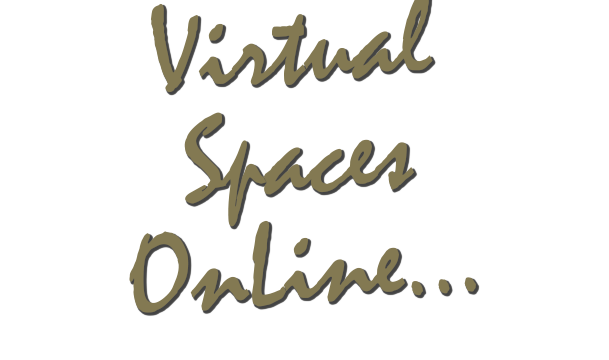
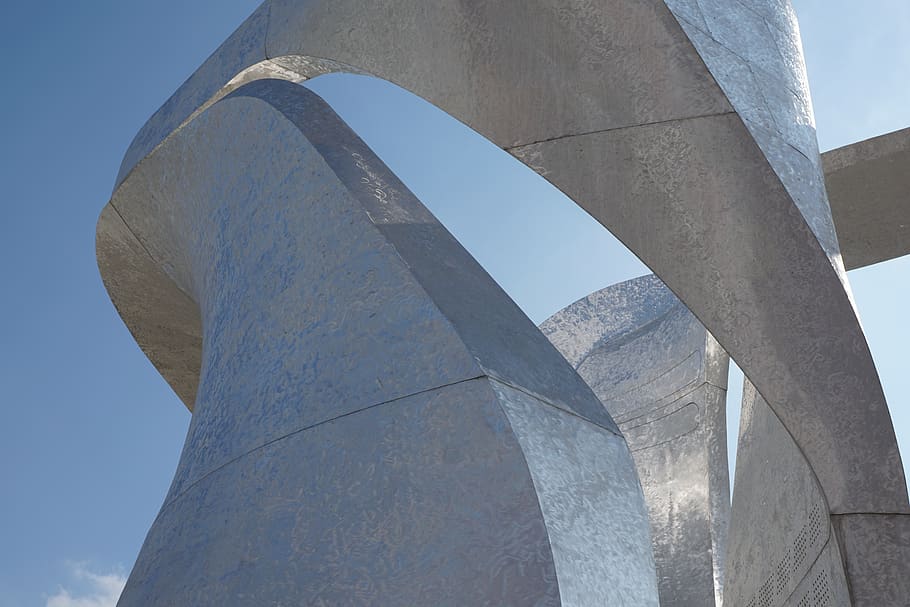
We design and develop 3D virtual spaces in the Internet:
-
Virtual 3D exhibition rooms
-
Virtual 3D textbooks and tutorials
-
Virtual 3D art galleries and museums
Who can utilize our virtual spaces?
- Industrial manufacturers
- Educational Institutions (incl. universities and schools)
- Scientific centers and researchers
- Art creators (painting, sculpture, jewelry art, applied art, architecture)
- Art managers, exhibition curators, art dealers
- Collectors
Benefits of our 3D virtual spaces:
- You can move around the virtual exhibition as if it was real.
- Unique emotional experience – total sensation of personal presence in the exhibition space;
- Possibility to launch from browser – no additional software required;
- Possibility to launch from browser – no additional software required
- All device compatibility: PC, tablets, smartphones;
- The possibility of audiocommentary support;
- Fancied by the youth due to close to video game experience;
- Constantly available all over the world.
Possibilities:
- Ability to view the arrangement of art works in an exhibition space prior to the exposition delivery. This allows selecting art works with consideration of real room layout.
- The most accurate assessment of emotional impact with the consideration of real lighting conditions of a room.
- The ability to view the exposition under restrictions on physical attendance of the exhibition.
- Convenience of virtual attendance for people with mobility impairments.
- The opportunity to be acquainted with exhibit items prior to attending the exhibition.
- The ability to have audiocommentary support for the whole exposition as well as for every exhibit item individually.
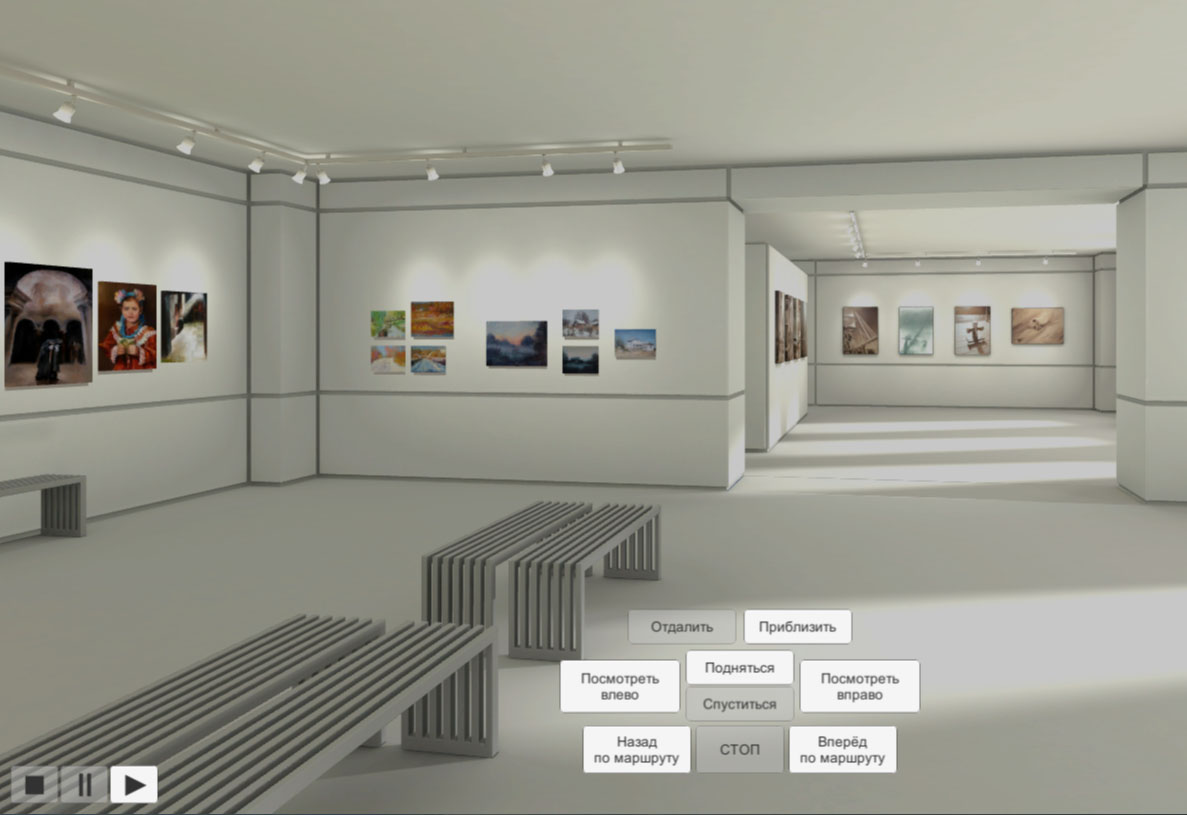
The room layout of a virtual gallery example
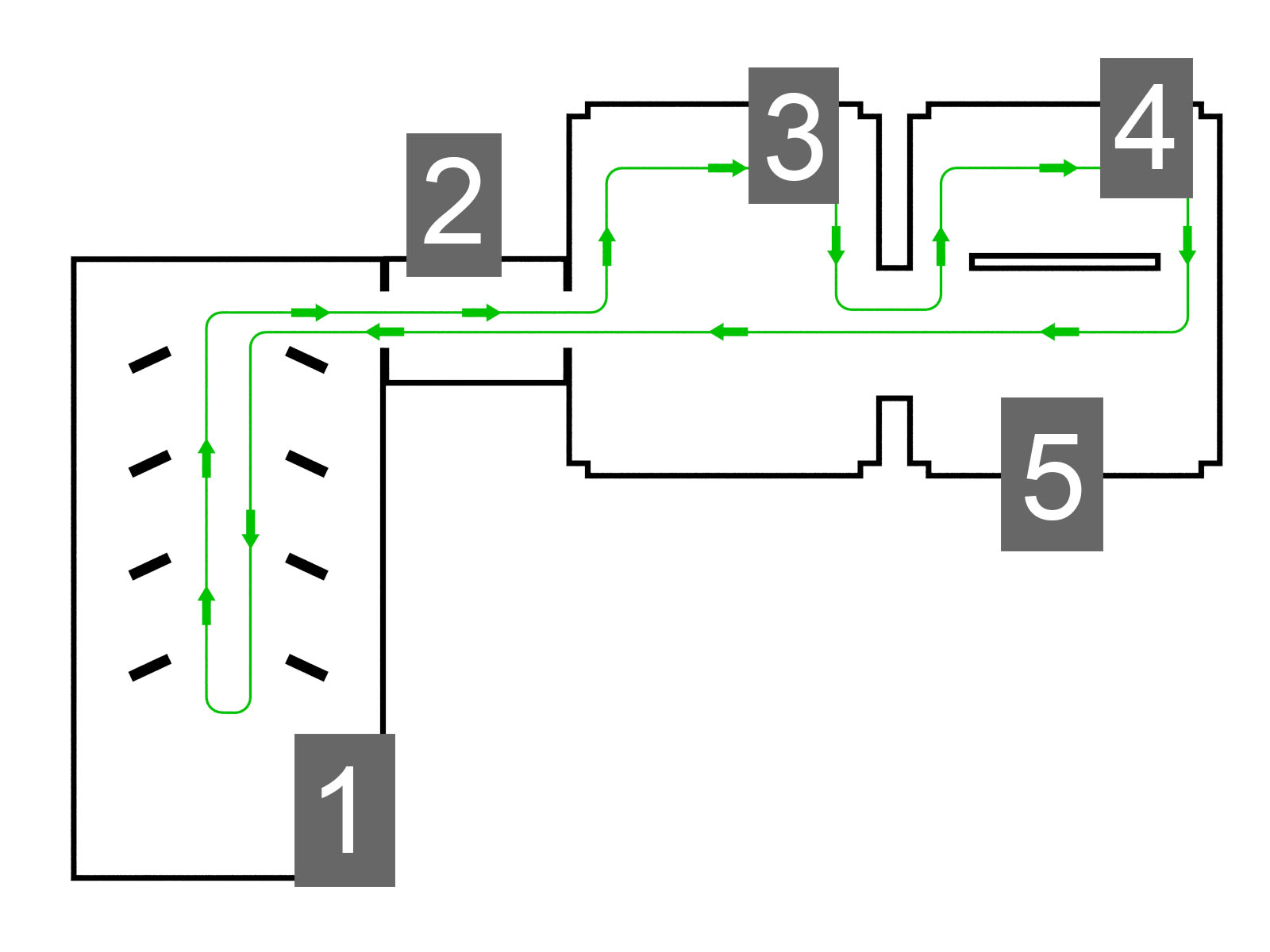
- Stand exposition room
- Passage
- Oil painting room
- Photography room
- Graphic arts room
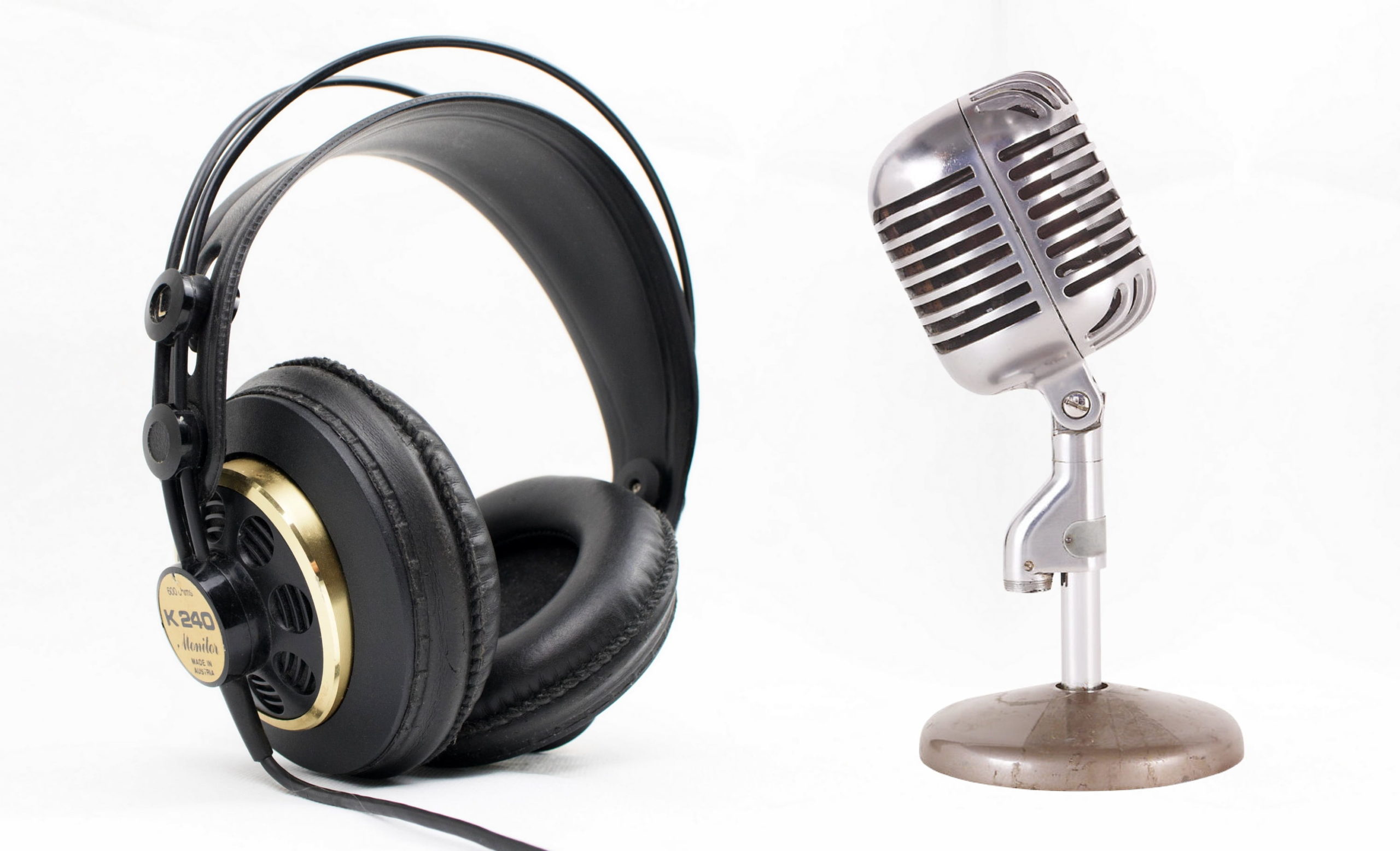
Audio support
Moving around the gallery can be supported by audiocommentary. The recorded voice of the exhibition curator or art expert can refer to the whole exposition as well as to every viewed exhibit item individually.
After the exposition is formed, the recording is carried out with a voice recorder or even a simple smartphone – modern technologies allow us to make decent quality voice recordings with any piece of equipment.
Output recording is integrated into the final setting of a virtual space and becomes accessible during the exhibition view. The same recording can be used in audioguides during real exhibitions.